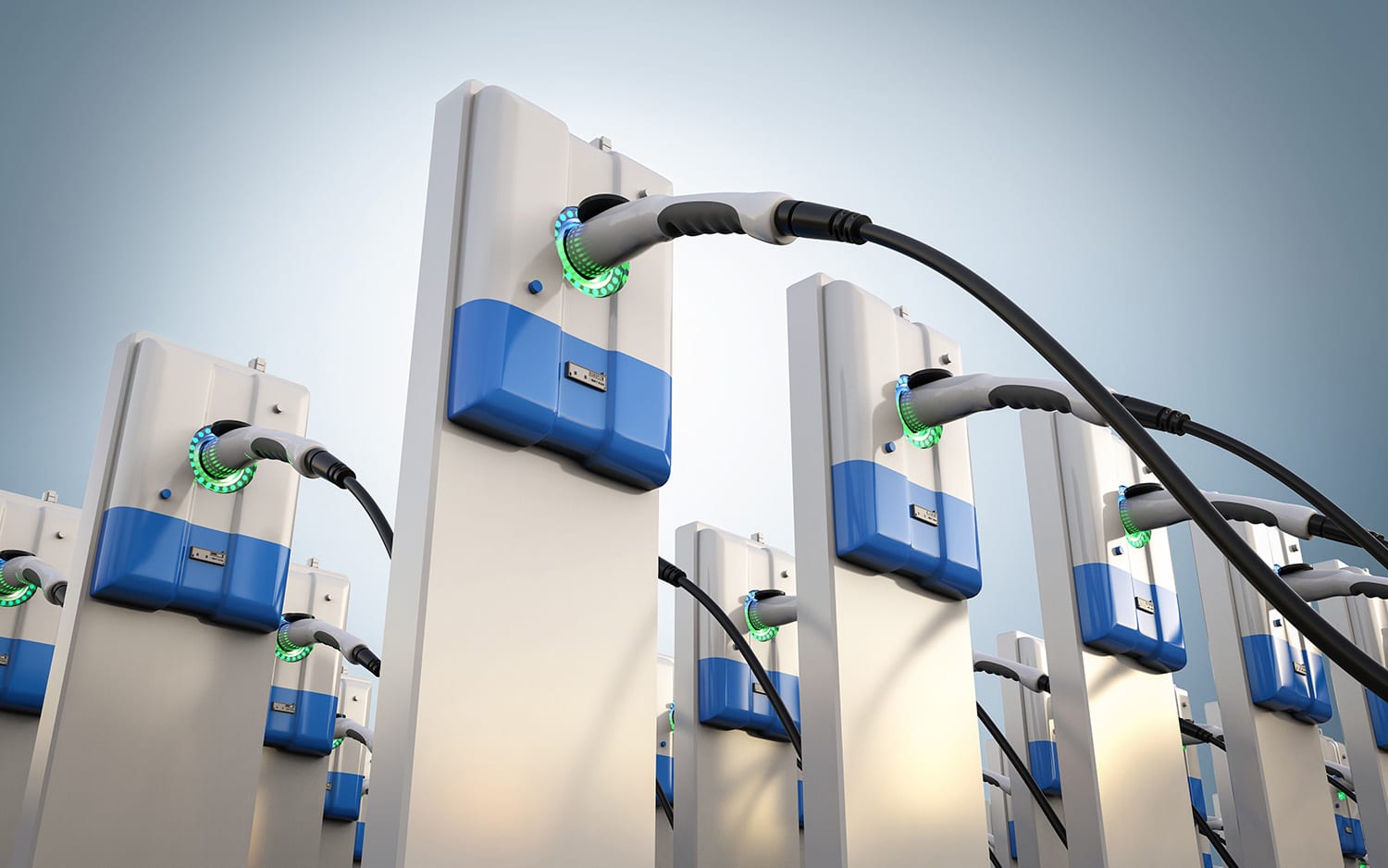
Seven-Generation Decision-Making
A major factor of sustainability is thinking about how we
Share:
Share:
Those working in the practices of city building, operating, or maintaining are familiar with the critics of parking. For instance, parking woes may include increased walking distances, circuitous transit, and low-efficiency movement for shared mobility. The impacts of parking extend beyond travel and into the environment as we see evidence of heat sinks and impermeable surfaces affecting runoff and stormwater that create financial liabilities for the operator. As the cost of driving personal cars continues to rise, the cost of maintaining that infrastructure also rises.
The importance of parking cannot be lost in the discussion. A parking lot provides a market-driven asset to facilitate independent movement by personal vehicle, while general other functions, such as goods delivery, tend to be secondary. Parking is there because it accommodates movement. The parking lot has become a revenue source which in some cases is paying for the operations of their facility. When looking towards the future of parking, we are asking a question about the future of mobility.
As communities and their needs evolve, we must evolve with them. We must incorporate smarter solutions that solve challenges—including parking lots—and make mobility more sustainable, equitable, and accessible.

The core challenge we’re working with our clients to resolve is a “chicken or the egg” type of problem. Do we change the built form away from parking lots or do we change the modes of travel before the development, thus reducing demand? In the long run, parking is an antiquated solution to single-mode mobility, but we cannot move away from it overnight, and the same solution will not suit every community. The future of mobility lies in a multimodal, accessible, streamlined approach we call “mobility hubs.”
A mobility hub is a natural evolution of the transportation system, and parking provides a key opportunity for that. Right now, we are working with our clients to incorporate them into communities and campuses in downtowns, rail stations, and parking lots. At their core, they bring flexible transportation choices together in a key location to enable a range of options. Mobility hubs also provide an opportunity to evolve the response to the market, providing several transportation solutions each with their own business model and revenue stream. The mobility hub is an evolution of parking, not a revolution.
Mobility hubs are generally delivered with primary, secondary, and neighborhood scalability. We use three design “levers” to define and design the mobility hub and achieve ambitious mobility goals:
By understanding the travel behaviors in an area and the services that people are moving to, we can work with clients to evolve the transportation system. Through these interventions, we create more expansive trips, serve more people, and build resilience into the mobility market.
In most cases, buildings are oriented toward existing parking. By repurposing some or all of this space, we can provide transportation choices to the people accessing the building as we design the mobility hub. For example, when the correct type of bike parking is placed in the right location, all nearby buildings invite cycling without each one needing to create their own unique solution. In the world of e-bikes and e-scooters, parking provides charging and both user and advertising revenue. This example changes the relationship between the people accessing each building and increases the function of the parking lot. Additionally, secure parking location provides a reliable end-of-trip facility, which opens new transportation choices and brings in new users.
Similarly, this approach extends to curbside management, deliveries, transit interchanges, electric vehicle charging, and even walking facilities. The mobility hub, properly placed and designed for the users interacting with it, creates a library of transportation solutions with high quality access to many destinations.
When considering the operation or feasibility of the mobility hub, the role of surface parking will continue to serve and respond to market demands. This creates a financially feasible solution that provides the opportunity to generate revenue from the parking spaces, even while the need for parking diminishes. In most communities’ private operators are established providing micromobility (e.g., bike share), electric vehicle charging, e-bike charging, wayfinding and advertising, private shuttles, and package delivery services. All of these are best positioned near businesses and in response to market demands, ensuring you can create a demand service for both the adjacent buildings and the transportation network.
We have developed mobility hubs in a way that balances a range of capital and operational changes. Exploring mobility hubs as a new solution? By testing out the solution as part of a temporary or pilot program, even mobility hubs with a small footprint can expand for events and seasonality – and ultimately influence and even change behavior over time to create communities that are more accessible and open to different modes of mobility.
For landowners—building owners/operators, developers, or parking authorities—mobility hubs create a potential to expand users. They basically rejuvenate how people access the site, while directly trading inefficient transportation solutions for more beneficial options. Due to the space required, cost of construction, and the environmental impacts (e.g., heat sink, stormwater runoff), surface parking is wildly inefficient.
When mobility hubs function at their peak, they can serve the same person on several trips and purposes. Now the owner of the same parking spaces has effectively created a range of market offerings in the same space. The owner also benefits from multiple integrated transportation options which serve customers, business operators and good delivery. This is uniquely possible here because parking has already been built—at the intersection of transportation and destination.
Parking lot owners that aren’t changing their plans towards a mobility future are at risk of losing their relevance. Today’s economic trends are putting pressure on the car as the single-mobility solution. A mobility hub serves more customer types, uses land more efficiently, and ties the transportation land use to the needs of the future. This serves the parking function and opens the adjacent land uses to a range of new visitors and customers. To move away from the car you also need to move away from parking, this is an evolution, not a revolution. We work with clients to identify what transportation options are meaningful and viable. And we create a design that facilitates movement for everyone at the appropriate scale.
Curious about the potential that your parking has? Start by looking at areas for potential opportunities.
Stephen Oliver, MA, RPP, MCIP, is a Senior Planner—Transportation, Smart(ER) Mobility Practice Lead (Canada) for Stantec Consulting Ltd.
stock.adobe.com / nadia_snopek

A major factor of sustainability is thinking about how we

EV Readiness Perspectives

Aside from electric and automated vehicle use, what “green” practices

From the Editor Melissa Rysak, editorrysak@parking-mobility.org At the IPMI Leadership
Parking & Mobility is IPMI’s flagship publication, covering the news, trends, analysis, technologies, and people of the parking and mobility industry, and how it affects and influences communities around the world.
| Cookie | Duration | Description |
|---|---|---|
| cookielawinfo-checkbox-advertisement | 1 year | Set by the GDPR Cookie Consent plugin, this cookie is used to record the user consent for the cookies in the "Advertisement" category . |
| cookielawinfo-checkbox-analytics | 11 months | This cookie is set by GDPR Cookie Consent plugin. The cookie is used to store the user consent for the cookies in the category "Analytics". |
| cookielawinfo-checkbox-functional | 11 months | The cookie is set by GDPR cookie consent to record the user consent for the cookies in the category "Functional". |
| cookielawinfo-checkbox-necessary | 11 months | This cookie is set by GDPR Cookie Consent plugin. The cookies is used to store the user consent for the cookies in the category "Necessary". |
| cookielawinfo-checkbox-others | 11 months | This cookie is set by GDPR Cookie Consent plugin. The cookie is used to store the user consent for the cookies in the category "Other. |
| cookielawinfo-checkbox-performance | 11 months | This cookie is set by GDPR Cookie Consent plugin. The cookie is used to store the user consent for the cookies in the category "Performance". |
| CookieLawInfoConsent | 1 year | Records the default button state of the corresponding category & the status of CCPA. It works only in coordination with the primary cookie. |
| elementor | never | This cookie is used by the website's WordPress theme. It allows the website owner to implement or change the website's content in real-time. |
| viewed_cookie_policy | 11 months | The cookie is set by the GDPR Cookie Consent plugin and is used to store whether or not user has consented to the use of cookies. It does not store any personal data. |
| Cookie | Duration | Description |
|---|---|---|
| _ga | 2 years | The _ga cookie, installed by Google Analytics, calculates visitor, session and campaign data and also keeps track of site usage for the site's analytics report. The cookie stores information anonymously and assigns a randomly generated number to recognize unique visitors. |
| _ga_02PMHW8YWC | 2 years | This cookie is installed by Google Analytics. |
| _ga_LC0QJJHM3J | 2 years | This cookie is installed by Google Analytics. |
| _ga_V9KYTSBYT2 | 2 years | This cookie is installed by Google Analytics. |
| iutk | 5 months 27 days | This cookie is used by Issuu analytic system to gather information regarding visitor activity on Issuu products. |
| Cookie | Duration | Description |
|---|---|---|
| mc | 1 year 1 month | Quantserve sets the mc cookie to anonymously track user behaviour on the website. |
| Cookie | Duration | Description |
|---|---|---|
| ultp_view_1052 | 1 day | No description |
| ultp_view_1058 | 1 day | No description |
| ultp_view_1060 | 1 day | No description |
| ultp_view_1064 | 1 day | No description |
| ultp_view_1068 | 1 day | No description |
| ultp_view_1070 | 1 day | No description |
| ultp_view_1072 | 1 day | No description |
| ultp_view_1078 | 1 day | No description |
| ultp_view_1082 | 1 day | No description |
| ultp_view_1088 | 1 day | No description |
| ultp_view_1100 | 1 day | No description |
| ultp_view_1103 | 1 day | No description |
| ultp_view_1114 | 1 day | No description |
| ultp_view_1118 | 1 day | No description |
| ultp_view_1122 | 1 day | No description |
| ultp_view_1125 | 1 day | No description |
| ultp_view_1130 | 1 day | No description |
| ultp_view_1132 | 1 day | No description |
| ultp_view_1135 | 1 day | No description |
| ultp_view_1541 | 1 day | No description |
| ultp_view_1554 | 1 day | No description |
| ultp_view_1557 | 1 day | No description |
| ultp_view_1560 | 1 day | No description |
| ultp_view_1563 | 1 day | No description |
| ultp_view_1568 | 1 day | No description |
| ultp_view_1572 | 1 day | No description |
| ultp_view_1576 | 1 day | No description |
| ultp_view_1580 | 1 day | No description |
| ultp_view_2305 | 1 day | No description |
| ultp_view_2321 | 1 day | No description |
| ultp_view_2338 | 1 day | No description |
| ultp_view_2342 | 1 day | No description |
| ultp_view_259 | 1 day | No description |
| ultp_view_270 | 1 day | No description |
| ultp_view_275 | 1 day | No description |
| ultp_view_286 | 1 day | No description |
| ultp_view_3074 | 1 day | No description |
| ultp_view_3115 | 1 day | No description |
| ultp_view_3334 | 1 day | No description |
| ultp_view_3336 | 1 day | No description |
| ultp_view_3338 | 1 day | No description |
| ultp_view_3340 | 1 day | No description |
| ultp_view_3346 | 1 day | No description |
| ultp_view_3354 | 1 day | No description |
| ultp_view_3361 | 1 day | No description |
| ultp_view_3367 | 1 day | No description |
| ultp_view_365 | 1 day | No description |
| ultp_view_367 | 1 day | No description |
| ultp_view_38 | 1 day | No description |
| ultp_view_3846 | 1 day | No description |